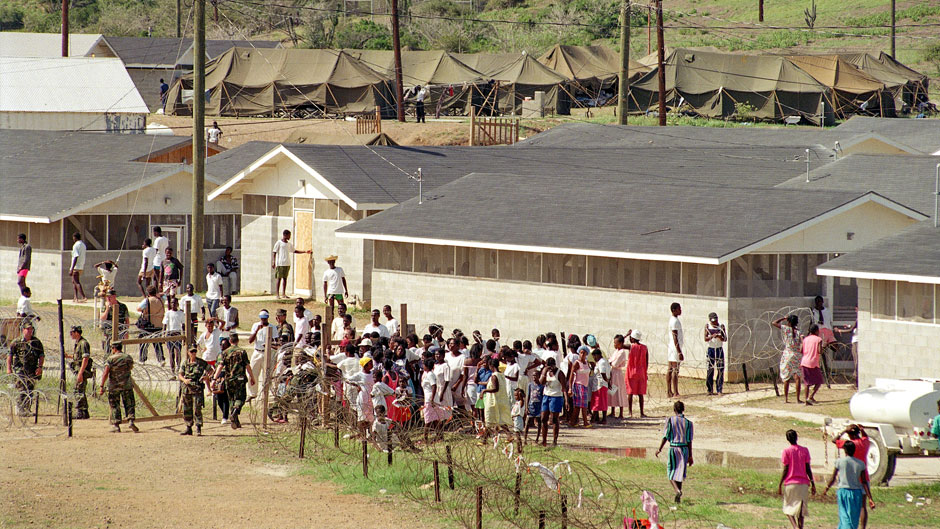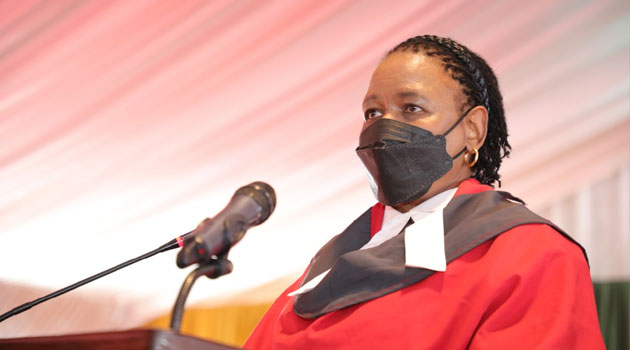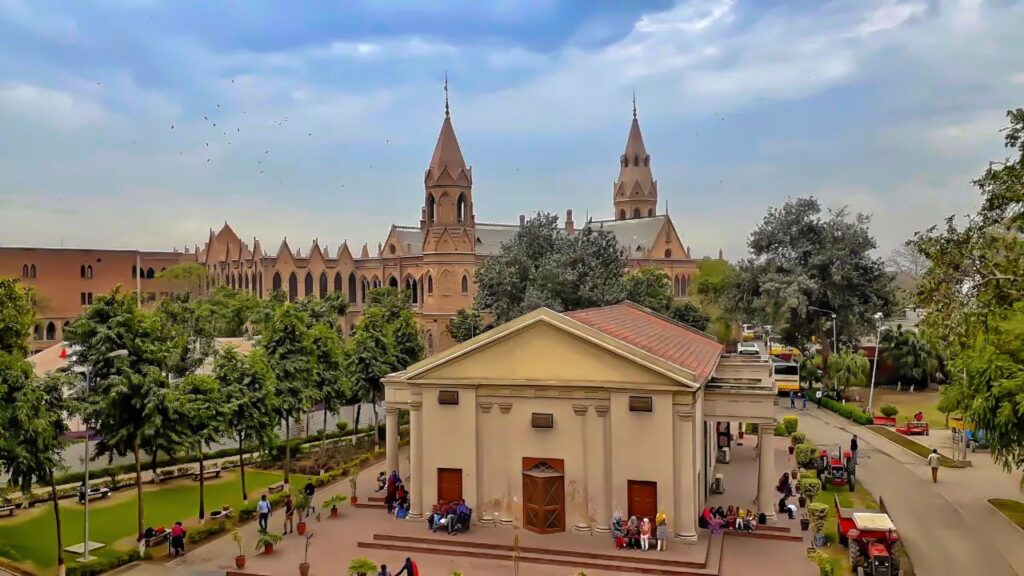Forty years after the United States documented its first HIV cases, Christopher Garcia-Wilde says focusing on basics can help defeat the world’s most persistent pandemic.
At 25, Christopher Garcia-Wilde has never known a world without AIDS, but the University of Miami medical and public health student envisions one, through the kind of social activism that shut down the world’s first prison camp for HIV-positive refugees.
Garcia-Wilde was unborn in the fall of 1991. That was when the United States imprisoned Yolande Jean and more than 200 other Haitian asylum seekers who tested positive for the virus that causes AIDS. in a detention camp at the Guantanamo Bay naval base in Cuba. .
But the fourth-year Miller School of Medicine student, a seasoned activist who studies the impact of social movements on public health, sees parallels between how the world today treats many people living with HIV. and how the United States treated Jean and other refugees who fled the wave of terror that followed the military overthrow of Haiti’s first democratically elected president.
Christopher Garcia-Wilde
“Yolande Jean and her fellow refugees at Camp Bulkeley experienced dangerous, unsanitary and deplorable living conditions that were oppressive and diametrically opposed to their health,” wrote Garcia-Wilde from a student perspective for the July print issue of the American Journal of Public Health (AJPH).
“Similarly,” Garcia-Wilde continued, “many people living with HIV are affected by government policies, corporate patents, health care systems, and discriminatory social conditions that work against their health. This reality is true around the world, with millions of HIV-positive people daily facing food insecurity, poverty, language barriers, racism, sexism, homophobia and criminalization.
The July issue, which is dedicated in part to the 40th anniversary of the first reported HIV cases in the United States, also includes an op-ed by the dean of the university’s graduate school, Guillermo “Willy” Prado, vice -Rector for Faculty Affairs and Professor of Nursing. and studies in health, public health sciences, and psychology, on inequalities in HIV prevention and treatment among Latinas.
Since June 1981, when the Centers for Disease Control and Prevention described the first cases of HIV in the United States, the virus has infected 76 million people worldwide, killing nearly half of them. And despite the introduction in 2012 of pre-exposure prophylaxis (PrEP) drugs that can prevent HIV transmission, the virus still infects around 1.7 million new people each year.
As such, Garcia-Wilde argues that efforts to end the world’s most enduring pandemic will not succeed if they focus on vaccine development, sex education, biomedical prevention, or antiretroviral drugs. Instead, he argues, ending HIV/AIDS will depend on broad coalitions demanding social transformation to provide housing, healthcare, safe food, clean water and other basic necessities. to those who live without.
“We can end HIV. We will end it,” insisted Garcia-Wilde, who as an undergraduate offered free HIV testing to University of Florida students. “But we have to change people’s social context. Many of the things we see in our hospital and clinics stem from a lack of housing, health insurance, healthy food, and exposures to occupational or environmental hazards – which are often created by systems, structures and laws that require the power to change. So we have to confront the people in power who can change them. Just like the people of the first prison camp for HIV-positive refugees – and their supporters – did.
As Garcia-Wilde documented in his AJPH commentary, Jean was arrested and beaten during the September 1991 military coup that overthrew President Jean Bertrand Aristide. An organizer of adult literacy programs, she was pregnant at the time and suffered a miscarriage. Hoping to seek asylum in the United States, she joined thousands of Haitians who fled in rickety boats.
Intercepted by the US Coast Guard, she was among hundreds of refugees taken to the Guantanamo Bay camp and, after testing positive for HIV, confined to tents that offered little protection from the elements. Inmates received even less care or comfort for their trauma. Their meager belongings were burned. The women were physically abused and forcibly injected with a long-acting contraceptive. Soldiers in riot gear regularly swept the compound.
After 15 days on a hunger strike to protest the abuse, Jean was placed in solitary confinement. But as news of the protest spread, law students at Yale University coordinated hunger strikes that spread to universities across the country. As lawyers challenged the detentions in court, a broad coalition of religious leaders, immigration groups and HIV/AIDS activists organized protests, petitions and media campaigns. Movie stars have condemned Oscar detentions.
When a federal judge finally ordered the release of the detainees to the United States in June 1993, their lawyers attributed the legal victory in part to outside organizers and their strategy of agitation – what Garcia-Wilde calls confrontational power. .
The son of South Florida public school teachers, Garcia-Wilde became interested in the power of social movements after the 2012 death of high school classmate Trayvon Martin. The 17-year-old Miami-Dade student was shot dead by neighborhood watch volunteer George Zimmerman while visiting his father in central Florida. Little came of the walkout Garcia-Wilde helped stage at his Miramar High School to compel Zimmerman’s arrest, but he soon found his ideological home with the Dream Defenders.
Launched by mostly college students after Zimmerman’s acquittal, the civil rights organization failed to achieve its original goal of repealing Florida’s Stand Your Ground law. But it has morphed into a broader movement focused on providing housing, healthcare, jobs and upward mobility for all.
Last year, during the height of the coronavirus pandemic, Garcia-Wilde spent three days a week at St. John’s Baptist Church in Miami’s Overtown neighborhood, where Dr. Armen Henderson, assistant professor of medicine at the Miller School and fellow Dream Defenders volunteer, ensured that homeless people could find free food, showers, clothing and hygiene products while the rest of the world shrank.
Garcia-Wilde, who plans to specialize in pediatrics and internal medicine so he can help “everyone from newborns to the elderly,” said his experience at St. John’s reinforced the beliefs he had. expressed on the 40th anniversary of the first cases of HIV in the United States “I met a lot of people there who were worried about their next meal or losing their things if they went to the bathroom,” said he said, “They didn’t care to take their medicine to prevent or treat HIV. It wasn’t a priority because they were just trying to survive.”







